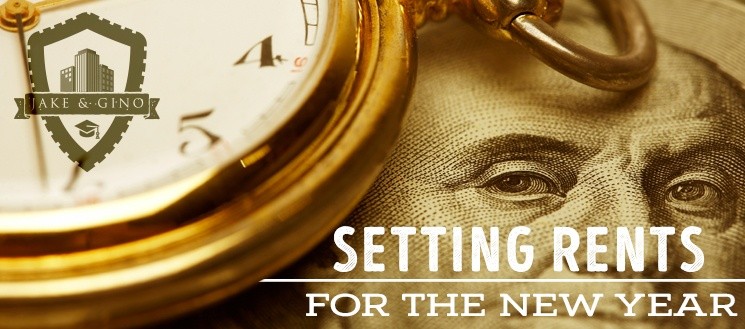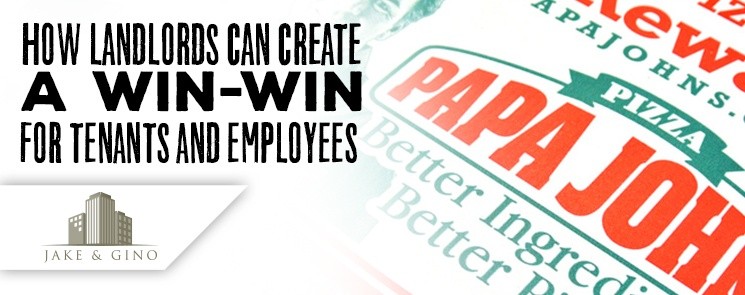
Setting Rents for the New Year
The art of raising rents is a difficult one to master for newbie investors. The fear of creating a vacancy or offending a tenant is unbearable for most new landlords. It is a touchy dilemma. You are directly impacting the quality of a tenant’s life when you increase the rent, but you are also affecting your ability to pay your obligations with the rent increases. In this article, I would like to list reasons why raising the rent on your properties is a necessary decision, how to accurately assess the market rental rate, and how to raise the rents effectively without creating a mass exodus.
Let me list the reasons why rents should be raised:
1. Keep up with the rate of inflation.
2. Grow the top line (revenue).
3. Stay competitive in the market.
4. Fight the expense creep.
If you have just acquired a property, or are in the middle of a renovation, you should read our article on our Three Step Reposition.
It is our framework on how to take over the operations of a property, and to effectively increase any rents that are under market. It will show you how to fill the vacant units, implement Ratio Utility Billing (RUBS), and raise the remaining tenants to market.
Before you consider raising rents, you need to make sure you are delivering a quality product to your tenants. What does that entail? In our properties, we strive to deliver clean, safe, affordable units with stellar customer service. We guarantee potential tenants a same day guarantee if they qualify to rent one of our apartments. We are always stressing our customer service and our quick and professional maintenance staff.
If you are trying to raise rents, and you business model does not deliver a quality product, you are going to experience the vacancy that I alluded to earlier. A tenant knows exactly what a two bedroom apartment is renting for, and if he can get a better deal down the street, then he is gone. But, if you can couple customer service with a competitive price, your retention rate will rise.
Need a few ideas on how to create win-win situations with your tenants? Read our article:
I often discuss with our Jake & Gino community the commodity effect. If your product or service becomes a commodity in the marketplace, then people will only shop you for price, and your margins and business will suffer. Take a look at the baking industry. Money has turned into a commodity, and the investor has countless choices to access money. Investors can drive a hard bargain with banks when trying to secure financing.
You want to avoid this mistake at all costs. The Internet has revolutionized how we shop for products and has led to the commodity effect. How do we try to navigate around the commodity effect? By offering great customer service, by differentiating our product and by giving the consumer reasons other than price to do business with our brand.
Now that we’ve discussed the importance of operations, I think we should examine the reasons why you need to be “pushing” rents. The most obvious reason is to keep up with inflation. Your costs go up every year, and your revenue needs to increase to offset your increase in expenses. The next reason may not be as obvious. Jake refers to this burden as the expense creep.
Every year, vendors are testing you to see if you are checking invoices to see if expenses are rising. It is your responsibility as an owner to review your contracts with vendors every year to insure the best price and the best value. Rent increases will offset some of the expense creep that occurs in everyone’s business.
Another obvious yet often overlooked reason is that landlords who do not stay competitive in the market are not maximizing their value. Let me give you a quick example. If you own 50 units, and the units are $50 per month under market, you are potentially losing $30,000 in revenue per year. That’s not even the worst part. The value of the property is $375,000 less at an 8 cap, due to the diminished income (Income/Cap Rate: $30,000/8%).
At this point, I think you’ve realized the importance of maximizing the revenue on your property. Let’s discuss how to determine the market rent and how to implement your strategy.
The first step is to determine the market rent. There are two websites that we use as a barometer for the rents. The first one is Rentometer. Plug in your address, insert the rent you are charging, pick the unit size and voila. The rent-o-meter will give you an average price, a median price and will tell you if your price is a good deal or if you are overpriced. You need to decipher what amenities your property offers compared to the market, but this is an excellent starting point to evaluate rents in the area.
The other site that we often use is Apartments.com. Look up individual apartment complexes to see what pricing is, what amenities are offered, and what is available to rent. Most landlords use this site to advertise their rentals.
You can also try the good old fashioned way of picking up the phone and calling a couple of brokers in the market. A good multifamily broker should have the pulse of the market, and should be able to tell you what a two bed is renting for in a specific neighborhood. I employ all three of these strategies to price my property accordingly.
Now that we have assessed the market rent, it’s time to go to work. Once we have tenants coming off a lease, we will go to market rent with the apartment, depending upon how many leases come up at the same time. If you have several buildings in one property, you can select to target one building every month or two and institute rent increases. This will lower your risk of having too many tenants vacating at the same time. This will also give you an idea if your increases are in line with the market. If you are getting serious push back on the increases, then you can modify the increase or choose not to implement one.
It is imperative that you work with your staff and get constant feedback as to how the tenants are responding. Are they mad, threatening to leave, or are they just venting their frustrations. You need to maintain a careful eye upon how many tenants decide to vacate due to the increase.
Task:
Begin by analyzing the rental rates in your market. Once the market rate has been established, check to see where your rents fall. Are they at the market, or is their some upside? If there is some upside, then start renting the vacant units at the newly established market rate and begin to increase the leases that come due to the new market. Remember, take your time and be flexible with your pricing.
Please share with us any tools that you use to assess the rental rates in your market. I would also like to know how you address increasing those rents.
1. Determine the market rent
2. Look in December how you are performing
3. Take it one step at a time
Below check out our 60’th podcast “Manage Right, The second pillar of the Wheelbarrow Profits investment strategy.” for more info on Managing your properties!!
If you would like to partner or invest with Jake & Gino, please fill out this form:
Investor Form







